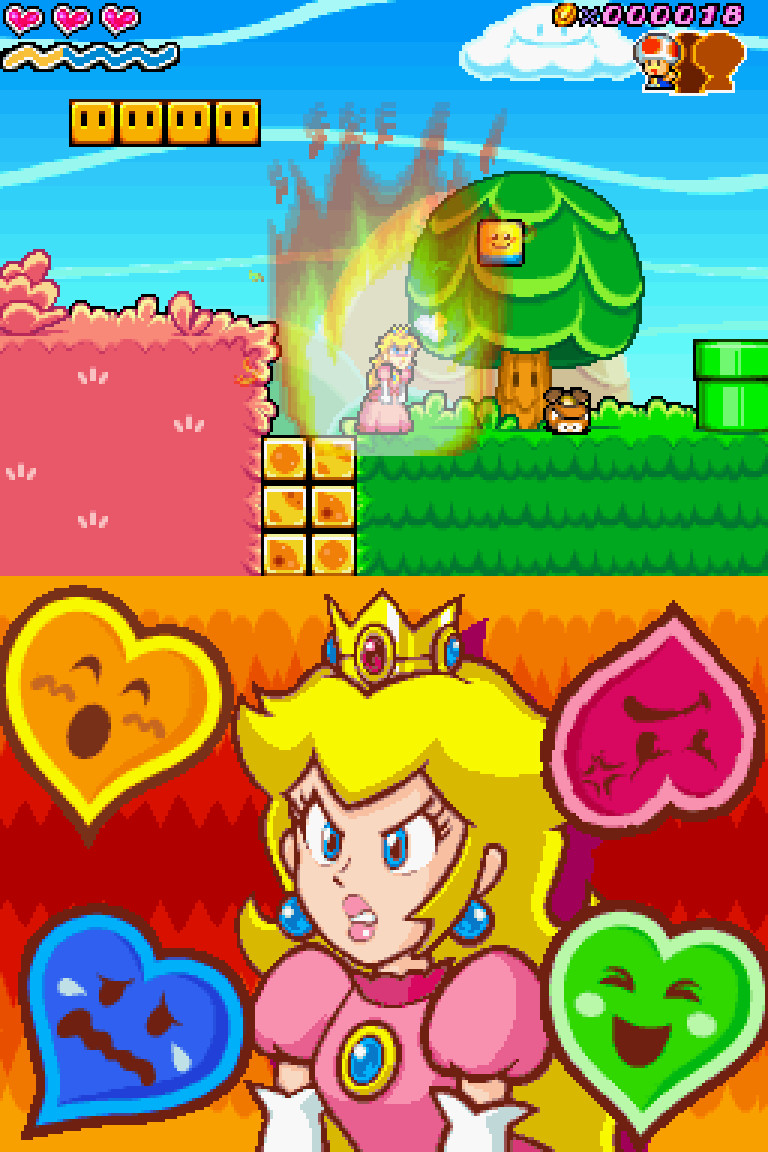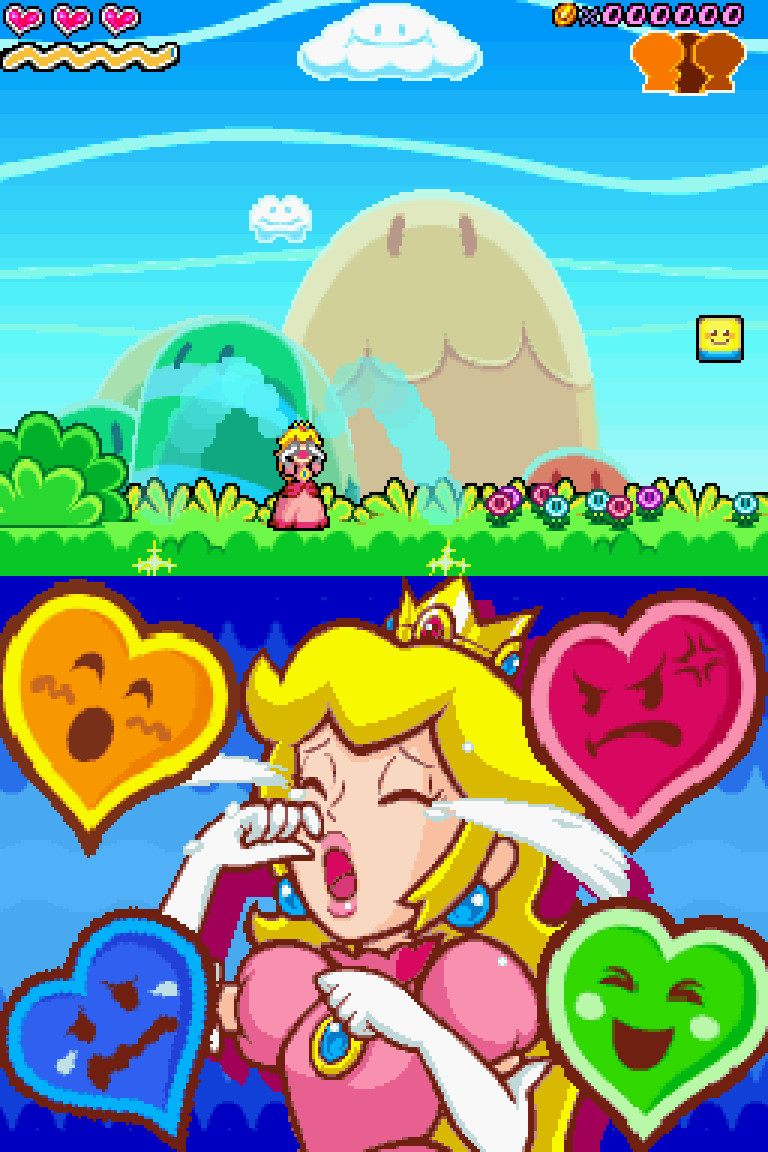Thinking of the cringe surrounding Super Princess Peach
For the first time in almost two decades, Princess Peach will headline her own game in the upcoming game Princess Peach: Showtime! for Nintendo Switch. Peach’s previous starring adventure, Super princess peachdebuted in 2005 on the Nintendo DS and flipped the typical story of a Super Mario Bros. game, with the princess tasked with rescuing Mario and Luigi in distress.
Like it Super princess peach, Show Time! seems aimed at a younger audience, based on its forgiving difficulty and simple controls. There are other similarities, including Peach having a sentient object as a sidekick. In Show Time!, it’s a magic ribbon; in Super princess peachit is a boy who has been transformed into a magical parasol named Perry.
Fortunately, there are even more changes. The tenor of the conversation around the new game seems to have progressed compared to how Super princess peach was written about at the time. And Nintendo’s current explanation of its special abilities in Show Time! is much less cringe and sexist than the setup of her DS adventure.
Super princess peach was originally planned for the Game Boy Advance by developer Tose, a journeyman studio behind dozens of Nintendo, Capcom and Square Enix games, but was eventually brought forward for the then-new Nintendo DS. That transition was clearly visible in the simplistic implementation of the DS’s touchscreen. As Peach, players could call on four emotions, or Vibes as the game described them, that enhanced her abilities. Those Vibes – joy, anger, gloom and calm – were accessed by tapping the four corners of a DS touchscreen, and Peach set objects on fire by tapping into her anger and drenching the level of tears with her overdramatic ‘ howl’.
Image: Nintendo
In her 2013 Tropes versus women in video games video “Damsel in Distress: Part 3,” argued critic Anita Sarkeesian Super princess peachThe mood swing-based powers made the game a “train wreck of gender stereotypes.”
“Peach’s powers are her out-of-control, frantic female emotions,” Sarkeesian said. “She can throw a tantrum and rage her enemies to death, or cry her eyes out and wash away the bad guys with tears. Essentially, Nintendo turned a PMS joke into their main gameplay mechanic.
Furthermore, Sarkeesian noted that although Super princess peach Inverting the typical gender roles of the Super Mario games, Peach still manages to take a narrative backseat to her male co-star, her sentient parasol. “Peach doesn’t even appear in the game’s narrative cutscenes, but they all focus on the backstory of her parasol, who actually turns out to be a cursed boy named Perry,” Sarkeesian said. “The premise of the guy in distress role reversal feels like it’s only meant to be a lighthearted joke or a niche market novelty.”
At the time, few critics at traditional gaming media outlets took Nintendo and Tose to task for the way Peach’s powers were handled. However, at GameSpot, the late Ryan Davis called out Super princess peach‘s “weird sexist undertones” in his 2006 reviewnoting that “there’s something rather sexist about the idea that Princess Peach’s big secret weapon is that she can get really overly emotional in one fell swoop.”
Many other reviewers of Super princess peach seemed to criticize the game primarily through the lens of their perceived audience – young, hardcore gamer guys – calling the game out for its easy difficulty, rose-colored tones, and assumption that only little girls would want to play it.
“When Super princess peach arriving at the IGN offices, the box it came in literally drenched the air with an overwhelming floral, peachy scent. Call it a clue as to where Nintendo is aiming its new platformer,” wrote IGN‘s Craig Harris at the time. “While the final released game won’t be under a perfume, from the title alone it should be clear to you what you’re getting into: a Mario-style game that’s likely aimed at a more feminine, and less hardcore, girl audience .” Harris gave Super princess peach a positive review: a 7.8 out of 10, or “good,” on the IGN scale.
At times, a reviewer noted the regressive approach to a female lead, while also reminding the reader that it is ultimately a game for young girls. 1 UP‘s review, written by former Polygon employee Jeremy Parrish, said, “It’s important to keep this fact in mind while playing, because if you’re not a little girl — and chances are, anyone reading this review is isn’t — it’s easy to get distracted by all the little things that don’t quite meet the expectations of the average hardcore gamer. For example, it is not a very challenging game. (…) Peach’s special powers come from her innate ability to cry and giggle. And it’s way, way too pink.”

Image: Tose/Nintendo

Image: Tose/Nintendo
Parrish also gave the game a favorable score, praising it as “a long-awaited reversal of franchise clichés”, but he also criticized it for its regressive approach to a female lead, writing: “Do not confuse this with a stunning victory for feminism” and encouraged Nintendo fans reading 1UP at the time to “suck (their) machismo long enough to give (Super princess peach) a fair shake.”
Starts early Princess Peach: Showtime! – including Polygon’s preview of the game – have been generally favorable and are not written from the perspective that “not hard = not good”, but to raise expectations about the game.
“Show Time! is definitely for the younger crowd, but so are many of the best Nintendo games,” IGN’s Brian Altano wrote in his preview. “And as an older Nintendo fan currently raising a younger Nintendo fan at home, (…) I love what it’s doing so far.”
“Princess Peach: Showtime! seems to confidently know exactly what it is, and that’s a way for gaming beginners to get a taste of many different types of games and find the ones they like,” wrote GameSpot’s Steve Watts.
It may have taken almost twenty years, but it’s encouraging to see how both Nintendo and critics have approached Princess Peach in their writing. Instead of seeing Princess Peach: Showtime! because it’s just a ‘game for girls’, it’s simply a game for Peach fans of all stripes – including the now older fans who want to introduce a new audience to Nintendo’s games or play alongside them as Princess Peach .
